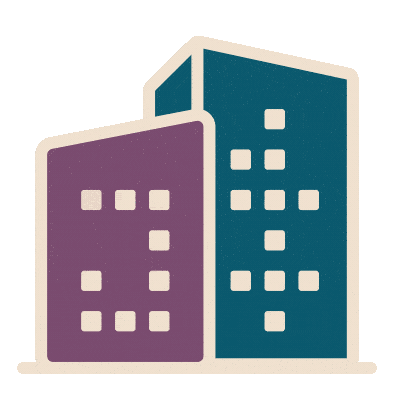Top 5 takeaways from the Fitness #WELLography
We know that physical activity leads to better health but sometimes it can seem impossible to balance a routine exercise schedule with the demands of the modern workplace.
We know that physical activity leads to better health but sometimes it can seem impossible to balance a routine exercise schedule with the demands of the modern workplace. The Fitness WELLography is your go-to-guide for evidence-based interventions that can help you incorporate movement into your everyday life and design environments that promote an active lifestyle.
Here’s what you might run into while reading the Fitness WELLography:
Get up stand up. Standing periodically throughout the work day is a great strategy to increase physical activity and decrease sedentariness. Compared to standing, sitting burns about 50 fewer calories per hour (note that exact caloric expenditure is dependent on body size, weight, and other individual factors). Therefore, standing in lieu of sitting for three hours per day, five days per week will burn approximately 750 additional calories. Over the course of one year, this adjustment can add up to more than 39,000 calories. Step into the Fitness WELLography where you can read about the evidence behind active workstations, interactive and passive physical activity prompts, and active meetings that can help inspire creative design and programming solutions to keep everyone up and out of their seats.

Skip the elevator. Did you know that taking the stairs can reduce your risk for life threatening health conditions? Data from the Harvard Alumni Health Study shows that climbing 20-35 flights of stairs per week is linked to a roughly 30% lower risk of stroke in men. In addition to the health benefits associated with skipping the stairs and taking the elevator it also means you’re helping displace the use of electricity-consuming elements of your building. Step into the elements section of the Fitness WELLography to learn more about the health benefits associated with taking the stairs and creative design and programmatic strategies to promote stair use in your workplace.
Walk and talk. Too many meetings on you calendar? (Me too…) Try hosting a walking meeting and you’ll be well on your way to meeting physical activity recommendations. Walking is actually one of the more commonly reported types physical activity: in the U.S. alone, nearly 145 million adults say that they walk their way to an active lifestyle. Step into the Fitness WELLography to read about additional strategies to integrate physical activity into your workday.
Did you know?

Did you know that mitochondria - specialized cellular subunits that are the main site of energy conversion - are positively impacted by physical activity? Physical activity, whether a moderate-intensity jog or a high-intensity interval training session, sends signals to the body’s metabolic systems. In response to this stimulus, molecules within our cells trigger a cascade of events that prompt cells to make new proteins and enzymes that improve the functional capacity and quantity of the mitochondria in order to meet new demands placed on the body.
Healthy competition. Feeling competitive? Try fostering some healthy competition with co-workers to increase physical activity engagement. What I love about this strategy is there is no 1-size fits all; create a program that is meaningful to your company and peers and (literally) run with it. Here at IWBI we host quarterly physical activity challenges - whether it’s miles walked, citibike trips taken, minutes spent being active - and duke it out for awesome prizes. Step into the Fitness WELLography to learn more about the evidence behind a little healthy competition at work.
What types of incentives can your business offer to help your employees incorporate movement into their everyday routines?
Create active spaces. By integrating the principles of active design into our buildings, we can have a profound impact on physical activity. Active design includes aspects of the interior and exterior environment such as aesthetic design in staircases, marked walking paths inside and outside the building, and dedicated spaces for physical activity. Step into the Fitness WELLography to learn about creative ways to integrate physical activity into every fiber of your building.
To learn more about fitness and physical activity, their relationship to health and buildings and strategies to promote active lifestyles, download, our new WELL app, Build WELL. Also, stay tuned for more WELLographies as they are rollout out on the app throughout the summer.







